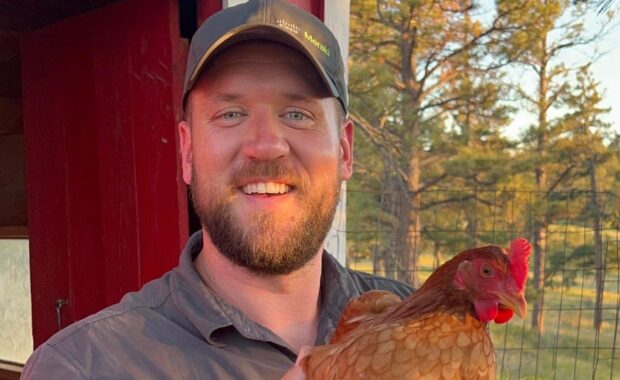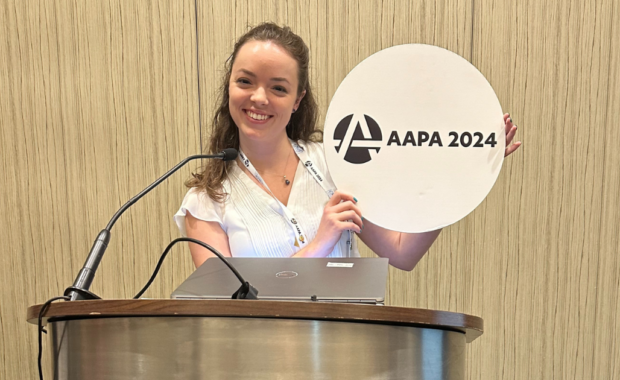Bilingual PA Ledyenska Ballesteros Has Built an Obesity Medicine Program to Serve Her Primarily Hispanic Patient Population
‘I think there are going to be a lot more PAs interested in this,’ Ballesteros says about the field in coming years
September 15, 2023
By Jennifer Walker

“Obesity medicine is an art,” says Ledyenska “Ledyi” Baez Ballesteros, MPAS, PA-C, who founded the obesity medicine program at Gonzaba Medical Group (GMG) in San Antonio, Texas, in 2015. “It used to be, ‘Eat less, exercise more.’ But obesity medicine is patient-centered to what works best for each person, so we don’t look at it like that anymore. Now it’s making sure all the pieces fit.”
By “all the pieces,” Ballesteros is referring to the contributors to obesity—biological predispositions and disorders including comorbidities like diabetes, hypertension, and hyperlipidemia, as well as psychological, social, environmental, and behavioral challenges—and the variety of potential treatments. Treating obesity has become a combination of prescribing the correct medications for weight management, providing cognitive behavioral therapy, coaching lifestyle changes, and more. The goal is to have these pieces come together into individualized plans that lead to more successful outcomes. “It really changes the way we look at obesity,” she adds.
Ballesteros—a bilingual provider treating patients who speak Spanish and English—began working in internal medicine and urgent care at GMG in 2011. She founded the obesity medicine program after gaining around 100 pounds after complications with her first pregnancy in 2014. Ballesteros, who now has two kids, subsequently embarked on her own weight loss journey the next year, and her patients began to ask her about it. The resulting pilot program started with an estimated 60 patients. Today, Ballesteros runs the obesity medicine program at GMG with nearly 700 patients, 75% of whom are Hispanic. By starting this program, she is calling attention to a chronic illness that even today can be overlooked.
“A lot of times in internal medicine and family medicine, we as practitioners do not fully grasp the diagnosis of obesity,” says Ballesteros. “We understand the person has obesity, but we never really focus on it. So, a lot of times, they’re being diagnosed with all the comorbidities, but obesity is often a common denominator. I work with [patients] on treating their chronic conditions like depression and metabolic disorders, but we focus on their weight and really try to integrate everything together.”
Fulfilling a Lifelong Goal

When Ballesteros was 12 years old and growing up in San Angelo, Texas, her family, including her parents and younger sister, began seeing a family physician for their medical care. This cemented Ballesteros’ interest in medicine. “I wanted to work in family medicine or something related so I could be a part of somebody’s family the way our doctor was for us,” she says.
In 2004, Ballesteros began the PA program at the University of Texas Health Science Center in San Antonio. After graduation, she worked in family medicine with a physician at a small private practice, also in San Antonio, where she primarily served pediatric patients and their families. But after two years, she was ready to continue learning while taking advantage of the opportunity to switch specialties that the PA profession offers. This is when she joined GMG to work in internal medicine. Today, Ballesteros practices in internal medicine on Mondays, Wednesdays, and Fridays, and in obesity medicine on Tuesdays and Thursdays.
As a provider who specializes in treating obesity—which affects around 42% of the U.S. population, according to the Centers for Disease Control—Ballesteros has been open about her own experience in this area with her patients, with whom she has built strong relationships over the last 12 years. “I think it’s important for patients to see us as more than just a white coat,” she says. “I know what it was like to try and fail diets, exercise programs, and medications. It has taken lifestyle adjustments, different treatments, and changes in my thought process to get me confident enough to work on my obesity. Because I’ve fought obesity in my adult life, [my patients and I] are able to work together more as a team. We go through this friendship where we share stories. We basically cheer each other on.”
Building an Obesity Medicine Program
In 2015, obesity medicine was in its early stages, and treatment options were limited and costly, says Ballesteros. Then, she focused on recommending lifestyle modifications and prescribing one of the few obesity medications that were available. If patients were taking medications for other diagnoses that were likely to impact weight, Ballesteros switched them over to more weight-friendly prescriptions.
But today, there are many additional medications for obesity on the market, and behavioral therapy has been recognized as a helpful tool in an obesity medicine treatment plan. After Ballesteros completed AAPA’s Obesity Management in Primary Care Training & Certificate Program in 2018, she began incorporating these treatments into her work with patients. She now sees patients every month, then every two months, then every three months until they reach their goals.
Although each patient’s treatment plan will be different, Ballesteros—who works with patients across all departments at GMG—says there are commonalities in the program structure. During every patient’s first visit, Ballesteros goes through their entire medical history to learn when they began struggling with obesity, what successes and failures they have had in addressing it, and what factors are contributing to it. She also asks patients the same question: “What brings you in?”
“That’s when I figure out where the patient is at,” adds Ballesteros, who also earned the NP/PA Certificate of Advanced Education in Obesity Medicine from the Obesity Medicine Association in 2020. “If they tell me, ‘My doctor said I need to come in,’ then I know this was never the patient’s idea and they may not be fully invested, so treating them may take more patience and imagination. But if they say, ‘I’ve tried everything; I need help,’ then I know the patient is ready.”
Ballesteros also has three rules for every patient in the program. First, they must keep a food journal, whether it is on paper, on the computer, or through the My Fitness Pal app. For her patients who can’t read or write in English or Spanish, Ballesteros says, “I tell them to take a quick picture on their phone and have their child translate it into words afterward. Or just bring me the phone: Every month, we can swipe through and play with what we’ve got.”
Then Ballesteros must see that patients are making an effort on their lifestyle modifications. And finally, they must attend their appointments. Those who fail to keep a food journal, adjust their lifestyles, or keep appointments will get a strike against them. After three strikes, the patient is removed from the schedule for six months. Then they can restart when they’re ready. Readiness is an important factor in the success of obesity management, according to Ballesteros.
Accounting for Cultural Differences

As a provider, Ballesteros, who is Puerto Rican, says there are some differences in dialect and culture between herself and her primarily Mexican and Mexican American patient population. However, the fact that she speaks Spanish, even if it is in a different dialect, has been an asset for her patients.
“A lot of our patients speak English, but they’ll have that one word that they can only express in Spanish,” she says. “So, knowing about the culture, understanding the culture, speaking the language, does make it easier for patients. The patient feels more comfortable and is able to express themself more easily.”
Perhaps surprisingly, the biggest challenge for Ballesteros has been finding obesity medicine resources—handouts about nutrition or sleep, for example—for her Spanish-speaking patients. “We have great resources for an English base, but when I’m trying to translate into Spanish, sometimes it’s not as cohesive,” she says. “Sometimes the diets also aren’t as relatable or reliable for my population.” For example, the Mediterranean diet includes vegetables that are not native to South Texas or Mexico. Ballesteros often adapts her advice so it’s relevant for her patients. She might recommend having a corn taco filled with egg and sausage instead of flour tortillas with chorizo and barbacoa, traditional meats in Mexico that are also fattier cuts.
Going forward, Ballesteros—who currently provides patients with a monthly handout from other sources at the end of every visit—has a goal of starting a more personal newsletter for her patients. She has also been enjoying lecturing on obesity medicine, particularly in regards to the elderly, Hispanic, and/or low-income populations, and she hopes to do more of this work. She has given lectures so far to members of AAPA, the Association of PAs and NPs, Bexar County Society of PAs, the Society of Army PAs, and the Texas Association of PAs.
“Obesity medicine is an exciting field right now,” says Ballesteros, who is the secretary and in the Board of Directors for PAs in Obesity Medicine, as well as a member of AAPA, the Bexar County PA Society, the Obesity Medicine Association, and the Texas Association of PAs. “There’s so much growth. In the next three years, with new medications and behavioral therapy being added in, I think there are going to be a lot more PAs interested in this. And for me, I can honestly say I have it all. I actually get to live out my childhood dream and be a part of my patients’ lives and their health journeys while making a real impact in this evolving specialty.”
Jennifer Walker is a freelance writer in Baltimore, MD. Contact Jennifer at [email protected].
You May Also Like
AAPA’s National Health Priority Toolkit: Obesity
Obesity Medicine PA Karli Burridge Finds Success with a New Approach
PA Robert Smith Has Dedicated His Career to Advancing Healthcare for Latino Populations
Creating a Safe Space to Discuss Obesity with Patients, Experts Speak
Thank you for reading AAPA’s News Central
You have 2 articles left this month. Create a free account to read more stories, or become a member for more access to exclusive benefits! Already have an account? Log in.



